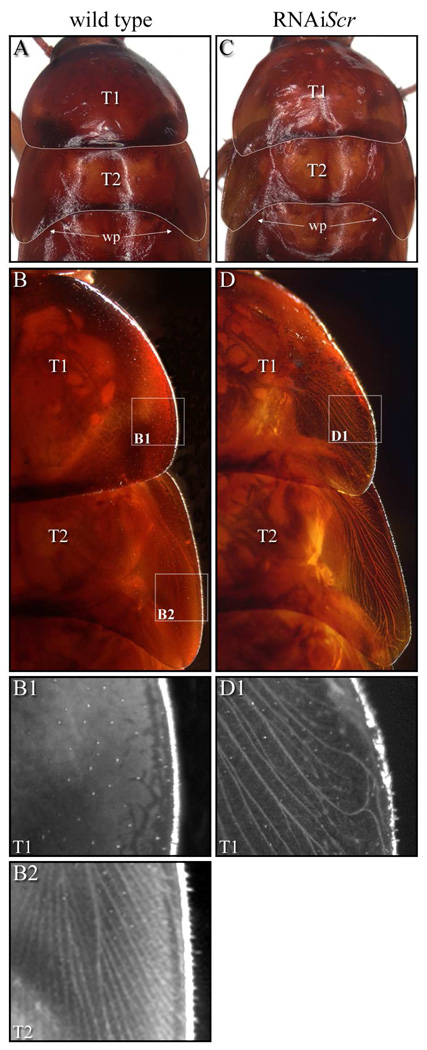Fig. 7.
Morphology of Periplaneta wild type and RNAiScr seventh instars. (A–B2) Wild type. (C–D1) RNAiScr. (A) Wild type seventh nymph pronotum (T1) and mesonotum (T2). Note the large wing pads (arrows) on the lateral margins of T2 making this segment morphologically distinct from T1. (B) Dorsal image of wild type T1 and T2 illuminated by indirect light. The branching wing veins (trachea) along the lateral margins of T2 are quite evident, while trachea are not observed in the pronotum. (B1) Magnified image of lateral margin of T1 (upper box in B1). Note the absence of wing veins. (B2) Magnified image of lateral margin of T2 (lower box in B). Branched veins are clearly present in the developing wing pad. (C) T1 and T2 of an Scr-RNAi seventh nymph. Compared to wild type, the morphology of T1 is altered due to the development of ectopic wing pads at the lateral margins of this segment. (D) Close-up view of lateral margins of T1 and T2 illuminated with indirect light showing the development of trachea in the ectopic wing pads. (D1) The development of veins in T1 is unmistakable (compare to B1). Note, however, that the developing trachea are not identical to those in wild type T2, suggesting an incomplete transformation of T1 toward T2.
Legend: T1 = prothorax; T2 = mesothorax; wp = wing pad.

